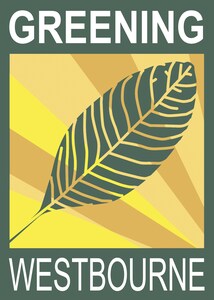The UK’s wildlife is threatened by development, intensive farming, pollution and climate change.
That’s why we need to protect areas that are important habitats.
One such area is the local ‘wildlife corridor’, a stretch of land that links the South Downs National Park and the coast, and includes most of Westbourne (see map below).
Chichester District Council is proposing to give this special recognition, so it can be a haven where animals can move, migrate and thrive.
But you can do your bit too, with Greening Westbourne’s new campaign: Westbourne Wildlife Watch.
All you need to do is report the wildlife you see in and around the village – in your garden or in our wild spaces.
You can do this online very easily using the iRecord website or app.
This is important because if there’s evidence that an area is home to important species, it has a better chance of being protected.
Endangered creatures are the most crucial to report, but you can also report more common ones, as they’re also under threat. Species at risk include water voles, hazel dormice, bats, hedgehogs, many birds and insects, and most amphibians and reptiles. Species once common, like starlings and house sparrows, are now declining. See more information on species at risk and how to identify what you see.
Reporting a sighting is easy and quick, and could make a huge difference. If you do have trouble using iRecord then here's our guide:
Tips for using iRecord
Using your phone, PC, tablet or whatever device you prefer, search for iRecord online. It is best to create an account with a user name, your email address and a password you can remember or keep somewhere safe.
With or without an account, look under ‘Record’ and click on ‘Enter a casual record’. This will probably be the page you use most often. That page asks for the following: Fields marked *are mandatory: others are optional.
- Date*. Click on the drop-down box and click on the date
- Recorder name *that’s you
- Species* enter the common English name and the box will show you alternatives (See What to Record below)
- Certainty – choose certain, likely or uncertain
- Sex – male, female or mixed for a group
- Identified by – if someone helped you identify what you are reporting
- Quantity – how many: approximate number if a lot
- Stage – choose adult etc.
- Photo – not essential – few creatures keep still long enough – but helpful for verification
- Is the record sensititive – usually it isn’t, but if you spot, say, the nest of an endangerd bird, this box allows you to show the location to the nearest (eg) kilometer when viewed by others using the database
- Location* – you don’t have to be specific; ‘Westbourne’ is enough, but you can add a street or area if you wish.
- Enter a Spatial Reference* – there is a dead easy way to do this. Use the map beside the question, click on the area and zoom in bit by bit using the scroll bar on the left. Eventually you will get the exact 10 metre square on Google maps and the national grid reference will automatically complete.
- Habitat – choose the best description from the drop-down box.
There is more detailed advice in the ‘Help’ tab under ‘Get started with iRecord’ in the top menu of the iRecord site.
What to Record
You can record anything living that isn’t a domestic pet or didn’t come from a garden centre. If you aren’t sure about something you saw, don’t be concerned. Record what you do recognise. Everything matters.
We're grateful to Westbourne Parish Council and the Southern Co-operative for their support for this campaign.
